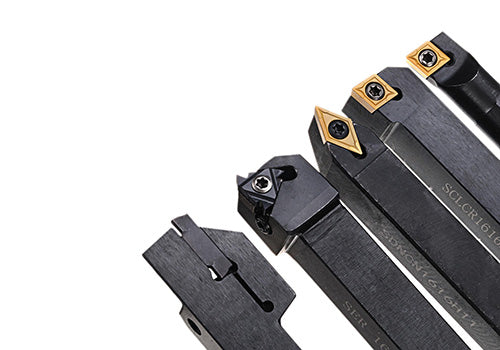
Factors to Consider When Choosing the Right CNC ID & OD Turning Toolholder
Share
Introduction
CNC ID & OD turning toolholders are vital components in any machining operation. They serve as the interface between the cutting tool and the machine tool, and their proper selection is crucial to ensure efficient and accurate machining operations. With the vast array of options available, selecting the right toolholder for a specific application can be challenging. In this blog post, we will discuss the factors to consider when choosing the right CNC ID & OD turning toolholder.
Material and Cutting Conditions
One of the most important factors to consider when selecting a CNC ID & OD turning toolholder is the material and cutting conditions. Different materials require varying cutting speeds, feeds, and depths of cut. Therefore, the toolholder must be capable of handling these conditions. For instance, when machining hard materials like titanium, the toolholder must withstand the high cutting forces and temperatures that result from the cutting process. Similarly, when machining soft materials like aluminum, the toolholder must provide good chip evacuation to prevent chip buildup and tool damage.
Toolholder Geometry
Another critical factor to consider when choosing a CNC ID & OD turning toolholder is the toolholder geometry. The geometry of the toolholder plays a significant role in the cutting tool's performance and the quality of the finished product. The toolholder's rigidity and stability affect the cutting tool's accuracy and the workpiece's surface finish. The orientation of the toolholder also affects the cutting forces and the direction of the chips. Therefore, it is crucial to choose a toolholder with the right geometry that suits the specific application.
There are different types of toolholder geometries, including square, round, and diamond-shaped toolholders. A square toolholder has four cutting edges and is suitable for roughing and finishing operations. A round toolholder has one cutting edge and is suitable for finishing operations. A diamond-shaped toolholder has two cutting edges and is suitable for roughing operations.
Toolholder Interface
The toolholder interface is another critical factor to consider when selecting a CNC ID & OD turning toolholder. The toolholder interface is the connection between the toolholder and the machine tool, and it must be compatible with the machine tool's spindle interface. There are several types of toolholder interfaces available, such as HSK, BT, and CAT, and each type has its advantages and disadvantages. It is essential to choose a toolholder with the right interface that is compatible with the machine tool to ensure optimal performance.
Toolholder Size
The toolholder size is another important factor to consider when selecting a CNC ID & OD turning toolholder. The toolholder's size must be compatible with the machine tool's spindle size and the cutting tool's shank size. Choosing a toolholder that is too small or too large can result in poor machining performance and can even damage the cutting tool or the machine tool.
Toolholder Material
The toolholder material is another factor to consider when selecting a CNC ID & OD turning toolholder. The toolholder must be made of a material that can withstand the cutting forces and temperatures that result from the cutting process. Common toolholder materials include steel, carbide, and ceramic. Each material has its advantages and disadvantages, and the selection depends on the specific application.
Conclusion
In conclusion, selecting the right CNC ID & OD turning toolholder is crucial to achieving efficient and accurate machining operations. When selecting a toolholder, it is essential to consider factors such as material and cutting conditions, toolholder geometry, toolholder interface, toolholder size, and toolholder material. Choosing the right toolholder for a specific application can result in high-quality machining results and can increase productivity and profitability.




